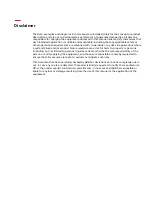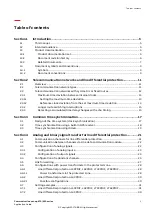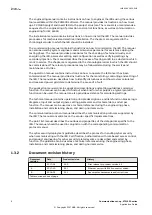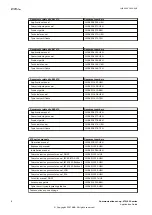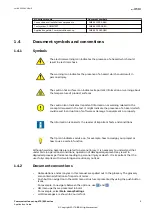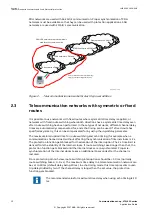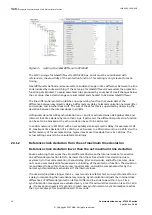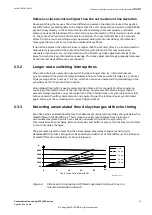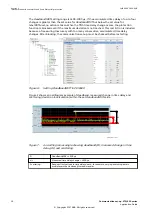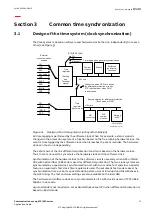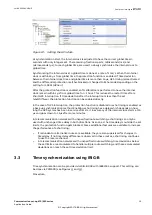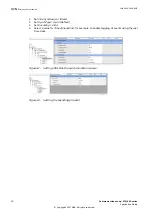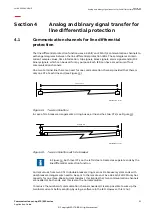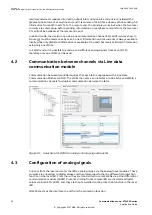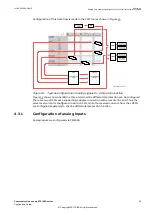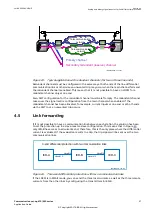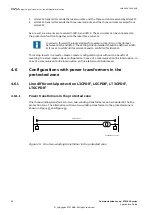
The protection function also gets blocked if the maximum time deviation (
MaxtDiffLevel)
between the line differential protection IEDs' internal clocks is higher than ±200-2000 μs (see
Figure
). Blocking of the function lasts until the internal clocks' deviation reaches the set value
range. Time required for new synchronization depends on the interruption time.
Maximum transmission time
T
d
≤ 20 ms
*Depending on required sensitivity
Protection
slave
IEC07000221-1-en.vsdx
< 0.2-2 ms* difference
continuous
Protection
master
Protection
slave
A
B
C
IED
IED
IED
IEC07000221 V1 EN-US
Figure 3:
Three-end application (protection master/slave)
2.3.1
Maximum time deviation between internal clocks
GUID-20739D2E-572A-4D7B-83F3-3F55B7177681 v1
2.3.1.1
Setting the maximum time deviation
GUID-787C8FBC-2B88-4488-AE46-3F58A7C5A4B1 v1
Maximum time deviation between internal clocks is set using the
MaxtDiffLevel parameter in
the respective (one to five) line differential protection IEDs. The setting is done on the local
). Maximum time deviation depends on:
•
Jitter and wander in the telecommunication network: typically ±100-200 μs in PDH
networks and ±50 μs in SDH networks (< ±100 μs according to telecommunication
standards).
•
Acceptable small asymmetric delay: typically ±50–100 μs. A constant (fixed) asymmetric
delay in the duplex channels can be adjusted by setting the asymmetric delay on the local
HMI or via the parameter setting tool (PST) which is part of PCM600.
•
Buffer memory in the telecommunication network: typically < +100 μs (buffer memories
should be avoided).
•
Clock drift during two seconds: < ±100 μs.
1MRK 505 382-UEN E
Section 2
Telecommunication networks and line differential protection
Communication set-up, 670/650 series
13
Application Guide
© Copyright 2017 ABB. All rights reserved
Summary of Contents for Relion 670 series
Page 1: ...Relion 670 650 SERIES Communication set up 670 650 series Version 2 2 Application Guide...
Page 2: ......
Page 10: ...4...
Page 99: ...93...

